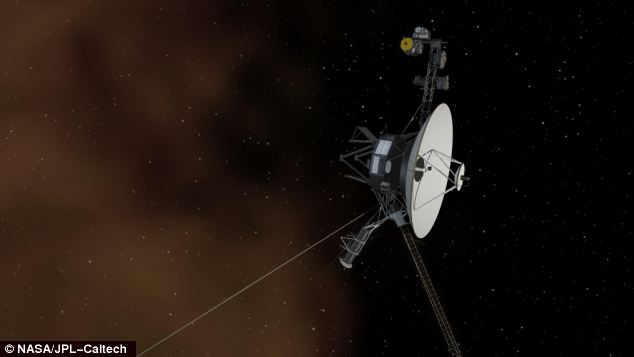Sunday Times 2
Are we there yet? Study claims Voyager 1 has not passed into interstellar space
It has becoming a running joke within the astronomy community – every few months, a new claim is made that Nasa’s voyager craft has passed into interstellar space.
Earlier this month, Nasa claimed that it has effectively ended the debate, saying the craft had finally, definitely left the sun’s reach.
However – a new study says that, in fact, that may not be the case – but researchers say they have finally developed a test that could end the debate once and for all.

The Voyager 1 spacecraft(NASA)
In 2012, the Voyager mission team announced that the Voyager 1 spacecraft had passed into interstellar space, traveling further from Earth than any other manmade object.
Now, two Voyager team scientists have developed a test that they say could prove once and for all if Voyager 1 has crossed the boundary.
The new test is outlined in a study accepted for publication in Geophysical Research Letters, a journal of the American Geophysical Union.
The scientists predict that, in the next two years, Voyager 1 will cross the current sheet – the sprawling surface within the heliosphere where the polarity of the sun’s magnetic field changes from plus to minus.
The spacecraft will detect a reversal in the magnetic field, proving that it is still within the heliosphere.
But, if the magnetic field reversal doesn’t happen in the next year or two as expected, that is confirmation that Voyager 1 has already passed into interstellar space.
‘The proof is in the pudding,’ said George Gloeckler, a professor in atmospheric, oceanic and space sciences at the University of Michigan in Ann Arbor and lead author of the new study.
Gloeckler has worked on the Voyager mission since 1972 and has been a vocal opponent of the view that Voyager 1 has entered interstellar space.
He said that, although the spacecraft has observed many of the signs indicating it may have reached interstellar space, like cosmic rays, Voyager 1 did not see a change in magnetic field that many were expecting.
‘This controversy will continue until it is resolved by measurements,’ Gloeckler said.
If the new prediction is right, ‘this will be the highlight of my life,’ he said.
‘There is nothing more gratifying than when you have a vision or an idea and you make a prediction and it comes true.’
The Voyager 1 and 2 spacecraft were launched in 1977 to study Jupiter and Saturn.
The mission has since been extended to explore the outermost limits of the Sun’s influence and beyond. Voyager 2, which also flew by Uranus and Neptune, is on its way to interstellar space.
Gloeckler and co-author, Len Fisk, also a professor in atmospheric, oceanic and space sciences at the University of Michigan, are basing their new test on a model they developed and published earlier this year in The Astrophysical Journal.
Based on this assumption, the study says Voyager 1 is moving faster than the outward flow of the solar wind and will encounter current sheets where the polarity of the magnetic field will reverse, proving that the spacecraft has not yet left the heliosphere.
© Daily Mail, London

